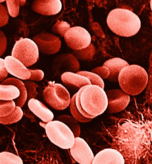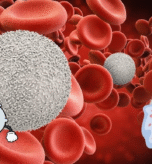Chemical peels are a popular cosmetic treatment that involves applying a solution to the skin to remove the top layers and reveal smoother, brighter skin. This non-invasive procedure has been used for decades to address various skin concerns, from fine lines and wrinkles to hyperpigmentation and acne. In this article, we will delve into the benefits of using a chemical peel and what you can expect from the treatment.
Benefits of Chemical Peels
- Improves Skin Texture: Chemical peels help remove dead skin cells, revealing smoother, brighter skin. This improvement in skin texture can make your skin look more radiant and youthful.
- Reduces Fine Lines and Wrinkles: Chemical peels can help reduce the appearance of fine lines and wrinkles by stimulating collagen production and removing damaged skin cells.
- Fades Hyperpigmentation: Chemical peels can help reduce the appearance of hyperpigmentation, such as age spots, sun spots, and melasma, by inhibiting the production of melanin.
- Unclogs Pores: Chemical peels can help unclog pores, reducing the appearance of acne and preventing future breakouts.
- Enhances Skin Tone: Chemical peels can help even out skin tone, reducing the appearance of redness and discoloration.
- Minimizes Pore Size: Chemical peels can help reduce the appearance of large pores, giving your skin a more refined and smooth appearance.
- Stimulates Collagen Production: Chemical peels can help stimulate collagen production, which can improve skin elasticity and firmness.
- Customizable: Chemical peels can be customized to address specific skin concerns, such as acne, hyperpigmentation, or fine lines and wrinkles.
Types of Chemical Peels
There are several types of chemical peels, each with its own unique benefits and characteristics. Some of the most common types of chemical peels include:
- Glycolic Acid Peels: These peels are derived from sugarcane and are commonly used to address fine lines, wrinkles, and hyperpigmentation.
- Lactic Acid Peels: These peels are derived from milk and are commonly used to address dry skin, acne, and hyperpigmentation.
- Salicylic Acid Peels: These peels are derived from willow bark and are commonly used to address acne, blackheads, and whiteheads.
- Jessner’s Peels: These peels are a combination of salicylic acid, lactic acid, and resorcinol, and are commonly used to address acne, hyperpigmentation, and fine lines and wrinkles.
What to Expect from a Chemical Peel
Before undergoing a chemical peel, it’s essential to have realistic expectations. Here’s what you can expect from the treatment:
- Pre-Treatment Preparation: Your skin care professional will provide you with pre-treatment instructions, which may include avoiding certain skincare products, waxing, or tanning.
- Treatment: The chemical peel solution will be applied to your skin, and you may feel a mild stinging or burning sensation.
- Downtime: The downtime for a chemical peel can range from a few hours to a few days, depending on the strength of the peel.
- Aftercare: Your skin care professional will provide you with aftercare instructions, which may include using certain skincare products, avoiding direct sun exposure, and moisturizing your skin regularly.
Conclusion
Chemical peels are a safe and effective way to address various skin concerns, from fine lines and wrinkles to hyperpigmentation and acne. By understanding the benefits and types of chemical peels, you can make an informed decision about whether this treatment is right for you. Remember to always consult with a qualified skin care professional to determine the best course of treatment for your individual skin concerns.



